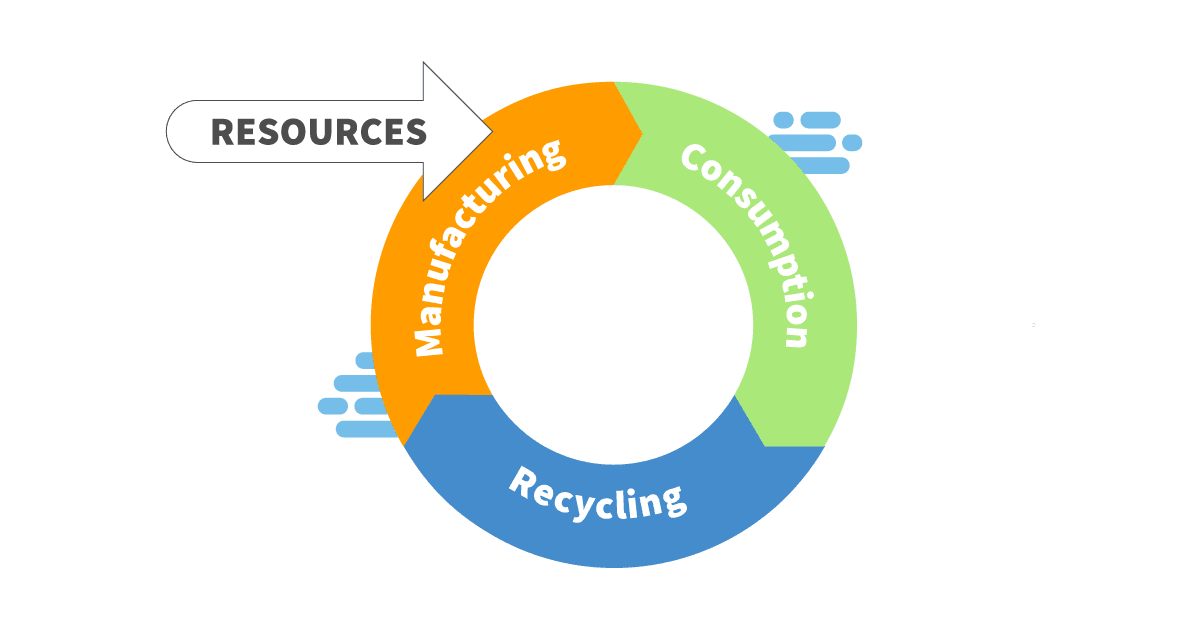Technology has propelled us into space, lifted millions out of dire poverty, and improved the lives of countless citizens over generations, providing us with incredible comforts, and levels of health and longevity never before seen by our species.
But technology is also responsible for the gravest threats we face today. Climate change and technology are interlinked in our modern society. Because of climate change, extreme weather conditions already devastate much of the planet through floods, fires, droughts, and hurricanes that displace millions of humans and drive the extinction of thousands of species with whom we share this earth.
Climate change is constantly in the news headlines, the Extinction Rebellion protests, and the grim prediction by the Intergovernmental Panel on Climate Change, who say we have just one decade to fundamentally change our economy. They claim that we must shift away from fossil fuels to avoid what is known as runaway climate change, when we will have reached the point of no return, no longer able to reverse the course of global heating, inevitably leading to catastrophic environmental and societal breakdown.
I’m going to assume that you’re an individual living in the so-called developed world, who probably works in technology or digital development, and is concerned about the future of our planet and our children, which is why you’re reading this article about climate change and technology on a software testing blog. I’m writing this because we all have a part to play. Our responsibilities and our individual carbon footprints contribute to the situation we find ourselves in today. You might be an entry-level designer, an intern, a product owner, or a company CEO at the helm of a growing tech empire; whatever the case, you can do something positive to contribute. I will list some ideas at the end of the article, but first, I will do my best to paint a picture of the climate crisis from the lens of our industry.
The cloud is full of CO2
The digital industry’s typical office is probably mostly paperless these days due to our reliance on Slack chats, Google Docs, Dropbox, and other platforms that help us communicate and share files and ideas instantly. As such, we might assume that we’re not causing any damage to the environment because it’s all in the cloud.
But the cloud is full of CO2. Without massive data centers that serve and store our electronic correspondence, our industry would not exist. Data centers require a considerable amount of energy, not only to power the vast warehouses of server stacks but also in the air conditioning to keep them cool as they continue to emit quantities of hot air as they whirr away 24-7. They consume over 2% of the world’s electricity and emit roughly as much CO2 as the airline industry! As global data traffic is doubling every four years, these numbers are only going to increase!

In his 2010 book, “How Bad are Bananas?: The Carbon Footprint of Everything” Mike Berners-Lee (yep, the brother of that other well-known Berners-Lee) estimates that the average email that you send, open, or forward generates 4 grams of CO2. This figure factors in the computer’s electricity, the email storage in the data center, and the energy used by the computer that receives it. Suppose your email has an attachment of 1MB, the CO2 would increase to 19 grams. If that email is forwarded to your team of 20 people, the footprint is duplicated 20 times, and so on.
Every email has a unique carbon footprint that reflects its size, so you can imagine how seemingly tiny, everyday work activities can add up.
Likewise, files stored in your online storage platform of choice such as Dropbox, or Google Drive, are continually using up space in these power-hungry data centers. Having an occasional cleanse of your old files, data, email attachments, and documents in “the cloud” can reduce your footprint associated with these files and free up available space. If everybody were a little more mindful of the space they use, perhaps we wouldn’t need to continue building data centers at such a rate.
The good news is that the biggest data center users, Google and Amazon, are committed to powering their servers with renewable energy, with Google being the largest corporate purchaser of renewable energy globally. There are also web hosting services, such as greengeeks, that allow website and digital project hosting in a more sustainable way.
Tech waste
Working in technology requires inevitable hardware and regular upgrades to infrastructure and devices. It probably comes as no surprise that the United States produces more electronic hardware waste than any other country, throwing away 9.4 million tonnes every year.
When procuring equipment, it’s usually the default position to go for something brand new, but this doesn’t always have to be. Refurbished devices might not be as appealing as brand new, but they can be just as fast. The carbon footprint and resource-use of pre-used technology is considerably smaller – and you can usually save money by shunning brand new.
But what do we do with our old tech that genuinely needs replacing? Your local council probably has an electronic waste disposal service, but there are alternatives. Many organizations, such as Solidaritech, can take care of your old technology for you. They repurpose old laptops, desktops, and phones, then distribute them to those who need them, extending the lifecycle of your industry tech and avoiding landfill.
Apple’s good news is its claim that operations are now running on 100% renewables, and they have a commitment to adopt 100% recycled materials throughout its supply chain. However, we are still a long way off adopting a circular economic system within our tech industry and further afield.

What is a circular economy?
A circular economy is an economic system with the goal of eliminating waste through continually repurposing resources. Circular economic systems reuse, share, repair, refurbish, and remanufacture as much as possible. They aim to create a closed-loop system that minimizes required input and reduces waste, pollution, and carbon emissions.
Can individual action make a difference?
While giant corporations and fossil fuel industries continue to pump out pollution and carbon into our atmosphere, there is also a growth in personal responsibility and awareness of individual contribution, both positive and negative, to the climate crisis.
We know that one person alone cannot save the world, but the more people who make changes to their lifestyles and buying habits, the more the big polluters will be forced to respond. Corporations who do not shift towards more sustainable and ethically sourced materials in our market-driven society, or produce lower-carbon products for a more ethically-minded consumer base, risk falling behind and being seen as uncaring.
The BBC offers a quiz where you can measure your carbon footprint. You can then compare your results with those of your colleagues, and consider the impact of everyone in your team, office, and company. In the workplace, there are a few things you can push for to make your software development office or design studio greener, such as switching to renewable energy, implementing policies that reduce or ban single-use items, discourage flights for business trips, or introduce more plant-based meals to the canteen. If you’re not in a decision-making role, you can lobby your manager or team leader to implement new policies. Having concrete environmental policies in place is not only good PR for the company, but it can help to future-proof your organization.
Can climate change technology make the difference?
While it’s appealing to think that technology will save us, that some Silicon Valley tech startup will come up with a machine that sucks excess carbon from the air, or Elon Musk will save us by inventing electric planes, the fact is this – there are no big, world-saving, tech solutions anywhere near the stage of development that will let us rest on our laurels.
The best thing we can all do is be aware of our own impact and make personal changes. We can reduce our consumption, be mindful of energy use (both personally and professionally), and create a work environment where staff are knowledgeable and interested in the issues. Environmental and sustainability policies need to be in place, so you and your team can live and work in ways that are more in tune with the planet’s needs around climate change and technology.
As recently reminded by Bloomberg, we already have the world’s most efficient carbon capture technology – trees! While there are some exciting carbon-capturing prototypes, such as an impressive algae bioreactor that reportedly ingests as much carbon as an acre of trees – nothing currently exists that does as good a job as nature’s humble tree. So one of the best things we can do is maintain the existing tree and rainforest population and funnel our resources and financial power to preserving and planting more trees as a low-tech but high-impact carbon capture connection between climate change and technology.
There is a popular action that involves planting trees known as carbon offsetting, where organizations effectively spend money on tree-planting as a way of purchasing carbon negativity to counter the emissions they create. There is an argument that this is not the way to a sustainable and healthy planet because it is, in effect, a form of ‘get out of jail’ card. It means that businesses can continue emitting carbon as usual, because they know they can simply allocate a percentage of their profits to offset it. While I support companies investing in carbon offsetting and carbon-negative schemes, it’s vital that they still address their emissions, energy usage, and waste in tandem with any offsetting they do. Otherwise, the point will have been missed entirely.